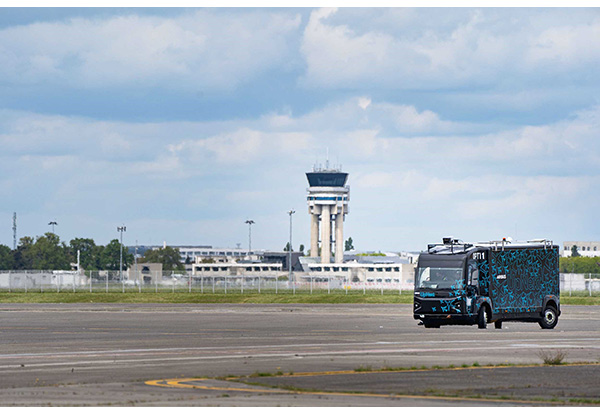New pilot assistance technologies take to the road with Airbus’ Optimate demonstrator
Automatic aircraft taxiing and new pilot assistance features to be tested in innovative electric truck
Airbus UpNext, a wholly-owned subsidiary of Airbus, has started testing new technologies to support automatic taxiing and enhance pilot assistance onboard an innovative electric truck.
The three-year research project, called Optimate, will combine a wide range of cutting-edge technologies including advanced automation, computer vision, data fusion and machine learning to improve aircraft navigation systems, the human-machine interface and overall flight safety.
“We are delighted to unveil another innovative demonstrator that reflects our unwavering commitment to pushing the boundaries of aviation. Our ambition is to use the best technologies to make our aircraft even more aware of their operating conditions, analysing it in as much detail as possible to become smart and reliable assistants to pilots, providing them with the optimal assistance. We are confident that this project will contribute to safer and more efficient air travel.” said Michael Augello, CEO Airbus UpNext.
A key objective for Optimate is to develop and test automatic taxiing based on more accurate and reliable position calculation, and to assess the potential of quantum sensing to improve position availability and navigation system robustness. Another objective is to investigate the capabilities of a collaborative map and virtual flight assistant to support pilots’ strategic decisions and interactions with air traffic control and airline operations centers.
To help reduce CO2 emissions from our test operations, the new architecture and algorithms will be validated on a test bed electric truck that replicates the key functions of a real aircraft cockpit and can roll down airport runways like an airliner. It will recreate an A350 cockpit on wheels featuring advanced automation technologies such as the latest generation of LIDAR and external cameras, combined with inertia and GPS technologies, satcom and 5G.
The final phase of the project will be to use the virtual assistant during a fully automated gate-to-gate mission on an A350 flight test aircraft.






